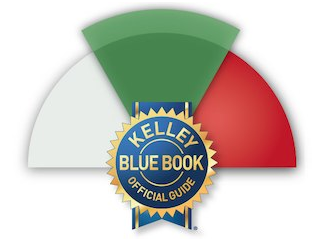
Cutting the Cost of Car Coverage: 14 Frugal Fixes
TABLE OF CONTENTS
Insurance can cost a pretty penny. 1-in-8 can’t afford car insurance or go without it for other reasons. Doubly so if a driver is new, or has a recent accident or SR-22 under their belt. Unlike Medicaid for health insurance, there is no low-cost federal option for auto insurance (except in CA, NJ, and HI). It is not seen as necessary for people to have in the same way. Fortunately, there are many ways to remedy this costly problem.
KEY TAKEAWAYS
- 1
There are several options available for reducing the cost of auto insurance, including increasing deductibles, reducing liability coverage, and exploring alternative insurance types such as pay-per-mile or co-op insurance.
- 2
Some states offer alternatives to traditional auto insurance, such as uninsured motorist fees, cash deposits, or auto surety bonds.
- 3
Drivers can also save money on auto insurance by being strategic about the primary driver listed on their policy and considering telematic devices that track driving data.
- 4
It is important to carefully consider the trade-offs and potential risks of any cost-cutting measure, and to make sure that the chosen insurance option still provides adequate coverage.
Ways to Reduce Auto Insurance Costs
Modify Policy
One of the easiest ways to start ratcheting down an insurance bill is to tweak the policy itself. There are two main ways to do this: increasing deductibles or reducing liability coverage (both of which can be risky).
1. Increase Deductibles
One of the easiest ways to drop the price of premiums is to increase deductibles on comprehensive and collision coverage. Going from a $250 to $500 or $1000 deductible has a significant impact on the price of those coverages.
2. Reduce Liability Coverage
While riskier than increasing deductibles, reducing liability (i.e. bodily injury and property damage) coverage also reduces the price. Try a few different coverage levels and compare how prices change. Going from the minimum to one step above will not likely cost much.
3. Change the Primary Driver
If a driver is married or lives with a significant other, they can try listing the other driver as the primary driver. We cannot confirm this works, but if the other driver is a female or has a safer record, it may have some effect.
Try Other Insurance Types
Maybe it's not you after all, it's your auto insurance. While less common, you can consider other (sometimes) more affordable routes to securing coverage for a car outside of a traditional auto policy.
4. Pay-Per-Mile Insurance
A few insurers use a different type of business model. Instead of a flat monthly premium, they charge drivers only for the number of miles they drive. Targeted at drivers who do not need to drive much these policies can offer significant savings. One caveat is that it requires installing a “telematic” monitor on the vehicle. This sends previously private driving data back to the insurer for their use. MetroMile and Esurance appear to be the main companies offering this service, and only in a few states. Metromile serves California, Illinois, New Jersey, Oregon, Pennsylvania, Virginia, and Washington. Esurance only serves Oregon. Alternatively, many insurers offer these telematic devices for driving discounts in many other states.
5. Co-op Insurance
Co-op insurance is available in New Hampshire and Vermont (and possibly other states). This type of insurance can often charge lower rates because they operate as nonprofits. Due to their lower overhead, it can make them a more affordable option.
6. Uninsured Motorist Fee
Some states, including South Carolina and Virginia, have another option. They allow someone to drive without insurance if they pay the DMV an uninsured motorist fee. This generally costs upwards of $500. It is important to note that this offers zero protection from liability if accidents occur.
7. Cash Deposits
A few states allow drivers to deposit cash with the state’s treasury department in lieu of insurance. The downside is that they require the driver to deposit at least the minimum amount of legally required liability coverage. Since this is generally $25,000 and up, it is not the most affordable option but is an alternative.
8. Auto Surety Bonds
Other states allow what’s known as surety bonds. A driver purchases one of these bonds for a certain coverage amount. The benefit is that they only pay a percentage of the total coverage amount upfront. If an accident occurs, the driver then pays the rest of the bond to the other party making a claim against them. If the driver cannot pay, the surety agency (who sold the bond, to begin with) steps in to cover the claim. The driver then continues to repay the bond over time to the surety agency.
The amount a driver has to pay up-front varies by credit score. Someone with a good score may only pay 1-4% of the total bond. Those with worse credit may have to pay between 5-15%.
While 32 states allow these, 22 of them need the driver to own upwards of 25 vehicles. The ten that do not are Alaska, Connecticut, Georgia, Hawaii, Indiana, Maryland, New Mexico, North Dakota, Pennsylvania, and Vermont. The table below details the bond requirements by state.
Surety Bond Requirements by State
State | Bond Deposit |
Alabama | $50,000 |
Arizona | $40,000 |
California | $35,000 |
Colorado | $35,000 |
Delaware | $40,000 |
Idaho | $50,000 |
Indiana | $40,000 |
Iowa | $55,000 |
Louisiana | $55,000 |
Maine | $127,000 |
Maryland | $75,000* |
Massachusetts | $10,000 |
Mississippi | $15,000 |
Missouri | $60,000 |
Montana | $55,000 |
Nebraska | $75,000 |
New Mexico | $60,000 |
New York | $25,000 |
North Carolina | $85,000 |
Ohio | $30,000 |
Oklahoma | $75,000 |
Rhode Island | $75,000 |
South Carolina | $35,000 |
South Dakota | $25,000** |
Tennessee | $60,000 |
Texas | $55,000 |
Utah | $160,000 |
Vermont | $115,000 |
Virginia | $50,000 |
Washington | $60,000 |
Wisconsin | $60,000 |
Wyoming | $25,000 |
* Drivers need to also meet the state’s minimum for personal injury protection unless waived, and uninsured motorist coverage.
** Or $30,000 in securities.
Source: Property Casualty Insurers Association of America, state insurance, and motor vehicle codes.
Change Other Factors
If modifying your policy or leaving the warm familiar embrace of a traditional auto policy isn't for you, there are still some actions and options outside the scope of the policy itself for reducing your car insurance rates.
9. Get a Cheaper Used Car
While not the simplest option, buying a cheaper used car can also help with insurance premiums. The value of a new vehicle depreciates quickly in the first few years, Insuring them before they have depreciated much can significantly bump up costs. Used cars over five years old that have high scores for safety and reliability are the best characteristics to look for.
Consumer Reports maintains an excellent library of car reviews. Though they require a subscription, most public libraries have them viewable for free. To find out the value of different vehicles, Kelley Blue Book offers a free calculator.
10. Pay Off Credit Cards and Debt
In almost every state (except CA, HI, and MA) insurers use credit scores to help determine insurance prices. Thus, increasing one’s credit score can lead to reduced costs. This sort of change will not reduce prices overnight. Insurers tend to only check credit scores at renewal time. But then again, it takes time to increase a score. So having a few months to nudge it higher may work out for the best. One downside is the difficulty of actually viewing one’s insurance credit score (which differs from regular credit scores) to see progress.
11. Shop Around for a Different Insurer
Geico does not lie when they say that 15 minutes can save you 15% on car insurance. Looking around at other insurers is probably the cheapest way to have the largest impact on your premiums. The list of all the available companies in your state is a good place to start. Also, keep in mind the discounts that most often apply when getting a new policy.
12. Increase Income
Somewhat of a different option, but there are many ways to earn a little change on the side these days. Websites like Upwork and Fiverr allow people to use their skills for individual gigs. There’s also the possibility of spending a few hours a week driving for Lyft or Uber. Be sure to determine if it is worth it financially beforehand. A special rideshare endorsement is generally necessary, even though the ride-sharing apps also offer some coverage.
13. Move to a Cheaper Location
Certainly the least practical option, but that’s why we list it last. A driver’s location is a major factor when insurers calculate the price of a policy. Naturally, the effect is more drastic when one compares a major city to a suburb. But even within a single town or city, certain zip codes may be considered higher risk than others. Relocating to a lower-risk location can offer some savings, though compared to the cost of moving, it is probably not a good enough reason on its own.
14. Cancel the Insurance Policy
Rates Likely to Go Up
If possible, avoid canceling a policy altogether. Not having a policy for any duration creates a lapse in your insurance record. Insurers are not fond of this. Even a day-long lapse between policies can lead to higher premiums when reapplying for coverage later. The only exception is sometimes an insurer lets a driver backdate a policy and pay for the time they were uninsured. They will only do this however if there were no accidents during that time. They also typically will not do it past a certain window of elapsed time (often 30 days).
“Storage” Insurance Alternative
Instead of canceling a policy, some insurers allow their drivers to activate what is known as “storage” insurance. This is an insurance policy with comprehensive coverage, and nothing else. While a remarkably cheap option, it also means the car cannot be driven. Without liability (personal injury and property damage) coverage, the insurance only protects the vehicle against risks a parked car faces (vandalism, theft, a tree falling on it, fire, etc.).
TABLE OF CONTENTS


Trying to find the best insurance?
We'll help you find the policy that offers the best value for your situation.
Further Reading

Navigating the Digital Insurance Landscape Considerations
A look at the immense value and high customer lifetime potential within the insurance sector.
Read article

When is Term Life Insurance Worth it?
Decide if term life's advantages are worth it: compare whole vs term life insurance, assess top term providers, and delve into in-depth reviews.
Read article

Insurance Binder: Bridging Between Coverage and Confirmation
From car loans to rental properties, insurance binders are required in a variety of situations. Discover the ins and outs of these essential documents.
Read article

Haven Life Review: Providing Prudent and Protective Policies
Uncover the benefits and drawbacks of Haven Life's term insurance policies, along with eligibility details, pricing, and customer feedback..
Read article
Start Comparing Quotes
Search from our learning center to learn everything from how to easily switch your car insurance to the ins and outs of home insurance.
Fill out just one form and get multiple quotes!



